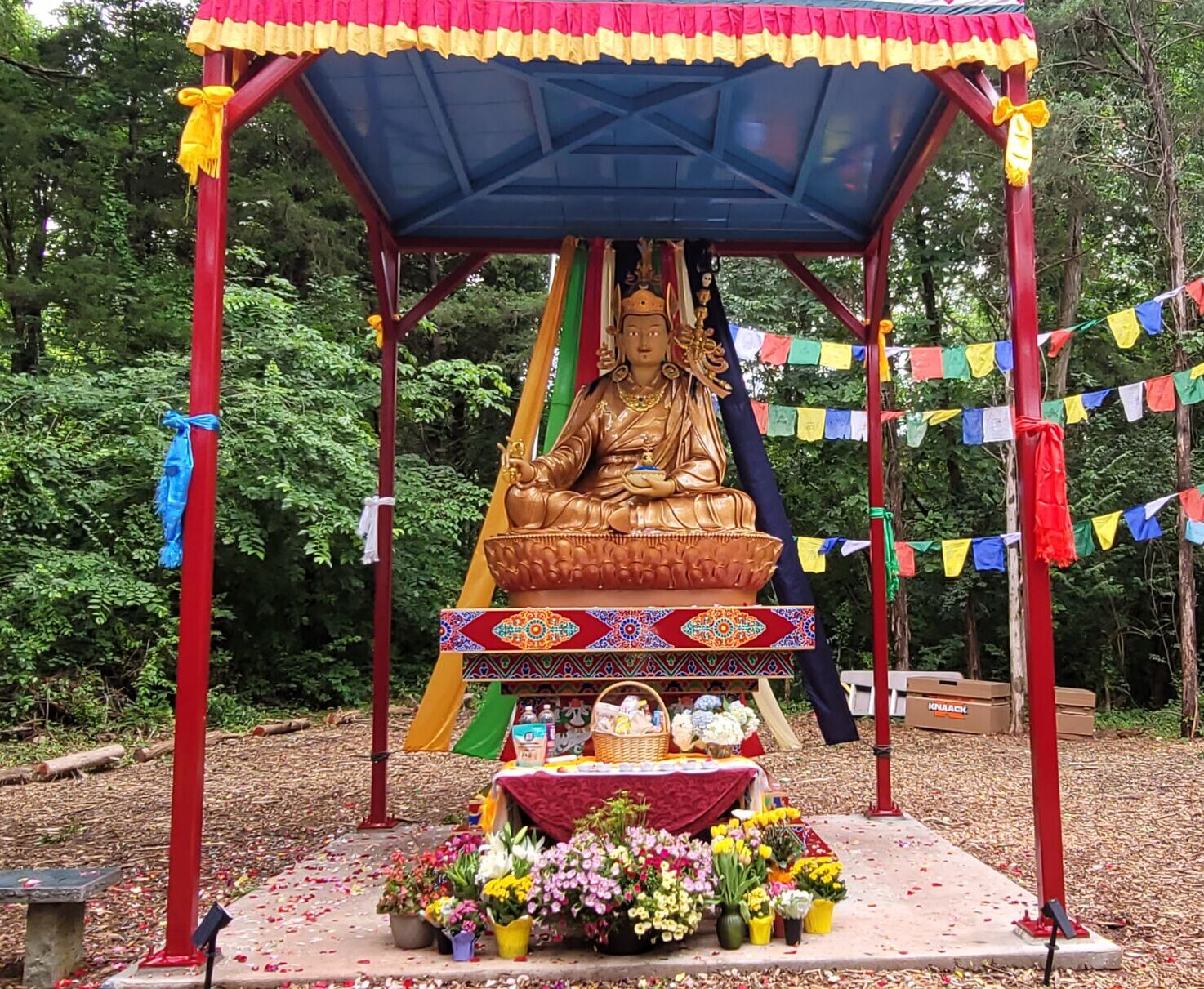
BethesdaBeat – Buddhist Temple in Poolesville Unveils New Statue


Buddhist temple in Poolesville unveils new statue
Dozens attend consecration ceremony for statue of Guru Rinpoche

Dozens gathered on the grounds of Kunzang Palyul Choling, a Buddhist temple in Poolesville, at the consecration of a new statue Tuesday morning.
The statue of Guru Rinpoche sits atop a red throne hand-painted by a team led by a Tibetan master artist. Together, the golden fiberglass statue and its steel throne are about 13 feet tall, according to spokesperson Shelley Sims.
The Guru Rinpoche statue symbolizes a global partnership between the rich sacred traditions of the East and the technological artisanship of the West, according to a press release from the temple. It’s considered an emanation of the Buddha and becomes empowered through the consecration ceremony.
“Guru Rinpoche is the appearance in the world of every conceivable virtue, without any exception,” Her Eminence Jetsunma Ahkon Lhamo Rinpoche, the temple’s founder, said.
Ahkon Lhamo, the first Western woman to be enthroned as a lineage holder in Tibetan Buddhism, initiated the project, which took more than a year, Sims said. The temple follows Tibetan Buddhism in the Vajrayana tradition.
Operating since 1985, the Poolesville location of Kunzang Palyul Choling is known for its 24-hour prayer vigil, which has been ongoing for more than 37 years, Sims said. There are about 120 regular temple attendees, Sims said, but more come to the temple for special events such as prayer ceremonies and teachings.
Kunzang Palyul Choling has temples in Arizona and Australia as well, according to its website.
Crafted in Nepal, the statue’s hollow frame has been stuffed with prayers written on paper and offerings. It’s the same case for the throne, which includes drawings of snow lions to hold up Guru Rinpoche. Each of the throne’s floral green-and-orange and blue-and-red sketches hold cultural significance in addition to providing decoration — the drawings speak of the path to enlightenment, according to a press release.
Flowers adorn the statue, leaving splatters of pink, yellow, blue, purple and white. Ribbons of yellow, green, red, white and blue create a radiant backdrop behind Guru Rinpoche, which is nested under a canopy supported by four red poles. Flags matching the ribbons feature prayers and line the clearing.
The colors surrounding the statue create a stark contrast to the green leaves and brown mulch of Peace Park, 65 acres of land across the street from the temple building on River Road.
Buddhist monks dressed in the traditional attire of orange and maroon led the dedication ceremony — some were local, while others traveled from Nebraska, Toronto and New York to help with the festivities.
The ceremony included chants of prayers and traditional Tibetan instruments of horns, cymbals, conch shells and drums. A monk passed around rice in the beginning and flower petals at the end, which guests tossed in the air.
In the back, a quiet fire became crackling with life as leaders offered plates of food, tree branches and even the smoke itself to the nature of Buddhism, which Guru Rinpoche represents.
“It’s not one deity,” Sims said. “You’re also offering to the Buddhist nature of yourself, not a concrete image.”
The smoke remained a predominantly white color with a tint of gray as its intense aroma engulfed the clearing, drawing distinction from the damp ground and the slight sprinkling of rain that occurred throughout the morning.
Near the end of the ceremony, a monk unveiled Guru Rinpoche’s face and community members began circling the statue as part of the ritual.
Statue viewing and the Peace Park are open to the public.




